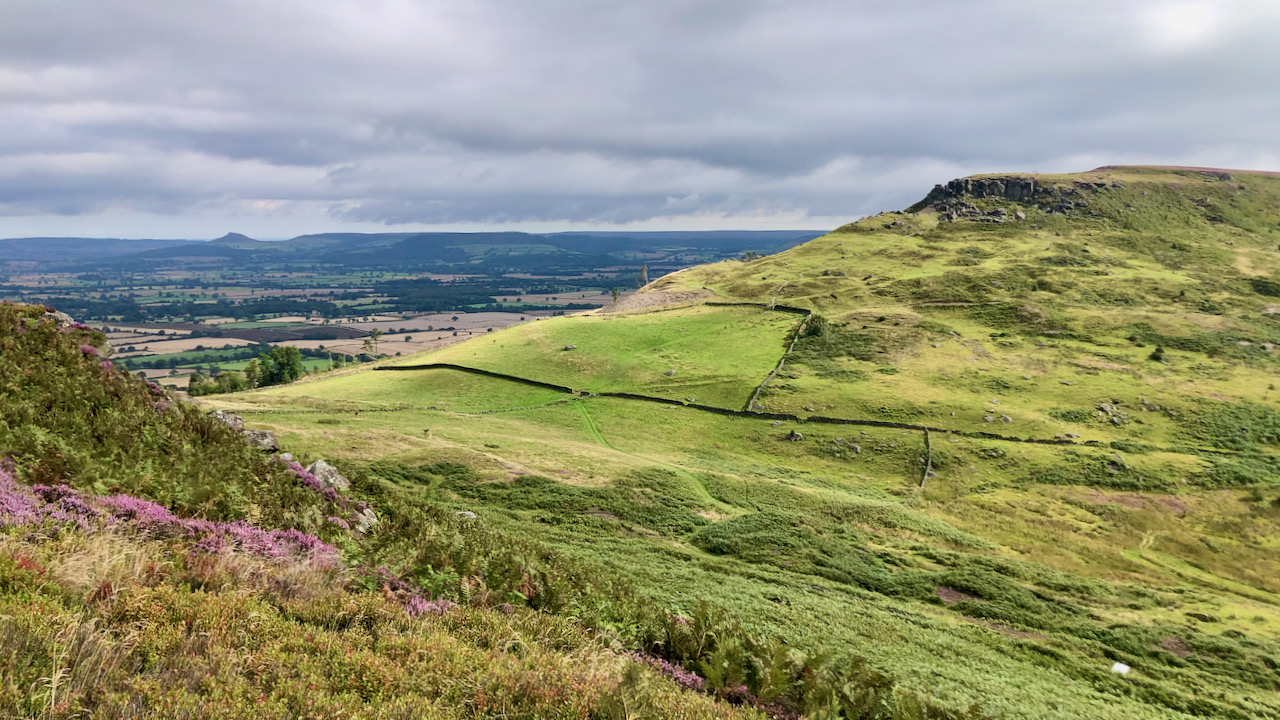Garfit Gap, that well-known col on the Cleveland Way nestling between Cold Moor and the Wainstones, is one of the four natural routes climbing up from the Cleveland Plain, southward over the barrier of Cleveland Hills into Bilsdale. Each route involves a formidable climb. Nowadays, though, the Clay Bank route, aided and abetted by the B1257 road, is favoured. Yet, this might not always have been the case.
At the col, a significant number of earthfast boulders have been discovered with rock carvings, etched by prehistoric man onto the bare rock surface, supposedly dating from the Late Neolithic to the Early Bronze Age, between 3,200 and 1,500 BC. For context, it was around 3700 BC when farming is assumed to have first developed in the area, as illustrated by the excavations at Street House, near to Loftus1Brunskill, Amy. 2019. ‘Excavating the Neolithic at Street House – Current Archaeology’, Current Archaeology <https://archaeology.co.uk/articles/news/excavating-the-neolithic-at-street-house.htm> [accessed 15 August 2023].
Below the jumble of rocks and crags of Wainstones, Garfit Gap is one of the prime sites for these prehistoric carvings within the North York Moors National Park. Others are at Fylingdales Moors, Allan Tofts, and Near Moor, all located on the Park’s fringe. At its heart, there is a noticeable scarcity. Bronze Age barrows may crown the ridges, silent sentinels of ritual and ownership, or waymarkers for age-old paths, but any rock art remains elusive.
The rocks below the Wainstones with their glyphs form an arc, as if aligning a causeway from Garfit Farm. It has been suggested that this arc — on the other side of the valley above the wall — is a hallowed pathway leading to the col, akin to the cursus earthworks at Stonehenge. It will certainly need a determined eye to see any evidence of this causeway.
Once at the col, Roseberry Topping, supposedly steeped in reverence, graces the skyline, a Neolithic ‘sacred’ hill.
In the days when Neolithic man was constructing grand structures from the Orkney’s Ring of Brodgar to Avebury and Stonehenge, the North York Moors folk seemed to have embraced simplicity, using the natural features of the landscape. Perhaps they had a bit of nous about them and thought better of dragging megalithic stones over many miles of difficult terrain. Why build a Silbury Hill to be near the stars?
Now, I did my share of searching for that rock art, and I thought I found a boulder or two, but I’ll be honest with you – the whole idea’s a bit wobbly, not quite sticking. I’m not convinced.
- 1Brunskill, Amy. 2019. ‘Excavating the Neolithic at Street House – Current Archaeology’, Current Archaeology <https://archaeology.co.uk/articles/news/excavating-the-neolithic-at-street-house.htm> [accessed 15 August 2023]

Leave a Reply